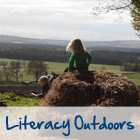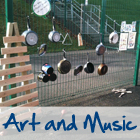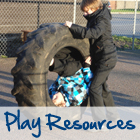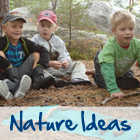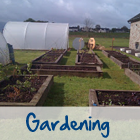I’m often asked if ponds are allowed in school grounds. The answer isn’t straightforward. Most local authorities allow schools and settings to have a pond. Some may have local guidance. Always seek permission prior to installing a pond from your line manager, head teacher and environmental services team.
Establish health and safety measures required
Check the health and safety expectations you need to meet. These may vary according to the age of the children in your care, the country live in, the local authority or academy trust your setting is run by and the perceptions of those in a position to grant permission. This blog post does not cover health and safety but simply gives examples of ponds from a range of schools and early years settings from different countries. You may well need a risk assessment for installing a pond as well as a risk benefit assessment for its maintenance and use afterwards.
The Royal Society for the Prevention of Accidents (RoSPA) have advice about pond safety and children. Bear in mind it is aimed at parents of toddlers, the most vulnerable group for drowning incidents so common sense needs to be applied to older age groups and the risks involved. Common sense says, consider:
- accessibility of the pond – do you need a fence and locked gate to ensure access is only possible when an adult is present. Is a strong grill sufficient?
- supervision of children – this will depend upon age, maturity and the ability of a child to understand the risks
- location of a pond – ideally in a quieter area so that visiting wildlife has peace and that there is sufficient vegetation to allow visiting animals to move safely up to and away from the pond.
- approach to the pond – is there a place that children can safely look into the pond without slipping, tripping or falling in? Will this be okay for children with mobility difficulties?
- size of pond. The smaller the pond, often the easier it is to manage but has less benefits for wildlife. There is a joy in quietly sitting beside water and looking into it.
- avoid loose netting submerged just below the water level. It can be hard to see, not good for wildlife and won’t stop a child falling in – indeed could aggravate the situation.
Ensure the location, design and choice of pond plants increases biodiversity.
A good source of British native pond plants can be sourced from Naturescape, though bear in mind, it’s based the other end of the British Isles to Scotland! I use Linden Garden Centre in Perthshire which specialised in ponds and water plants and have really helpful, knowledgeable staff. Deveron Water Lilies is a family run NE pond plants business. It has seasonally available plants and a wildlife pond. Be aware:
- Some pond plants can be invasive so check with your local countryside ranger or wildlife expert what is and is not ok to put in your pond.
- Fish like a pond that is sufficiently deep to live in through cold weather. Goldfish and carp are not native to the UK.
- Consider carefully where to site ponds for the seclusion that wildlife generally prefers. Have it close to hedges, long grass, log piles, etc. If it’s under trees then more clearance will be needed owing to leaf fall.
- Some little ponds are better off as marsh or wetland areas. They are still great homes for minibeasts and a source of water for wildlife.

The pond below was created in a tyre. It’s so established and overgrown that this is hard to believe it exists. This was based in a permaculture garden in the Czech Republic.

The pond below is part of a wildlife garden that is segregated from the rest of the school by stone dykes and fencing. So although it’s open and accessible, it’s remains outwith the children’s play area within the grounds.
A good place to put a pond is in a wet and boggy hollow. The school pond below is man-made but filled up naturally from the surrounding area. It is fenced off from the rest of the school grounds.
This pond below absorbs the rainwater coming off a building. It’s also in a natural hollow…

Other examples of ponds in schools
This is one of my favourite ponds. Again, some schools prefer raised ponds to avoid children walking into them. They can be less accessible for children with physical disabilities unless this has been accounted for in their design. However, I love the border being a seating area.
A pond that’s a performance space! This area of decking really makes this pond special. As you can see in the background, this pond is completely enclosed.

The pond below is part of a new school. I’m intrigued by the design in that only half of the pond is fence off. The other part is entirely accessible at ground level.
Maintaining a pond
Ponds take a certain amount of care and maintenance. This should be remembered before creating one. There’s plenty of advice in books about this aspect of ponds. Choose a book that covers wildlife ponds. Basically the pond often needs the gunk removed on an annual basis – the excess of fallen leaves and other debris that finds its way into a pond. Think about who will do this.

Ponds can add beauty, a place to think and reflect, a home for wildlife and nature discovery to any school ground. They are worth the time and effort to establish.



